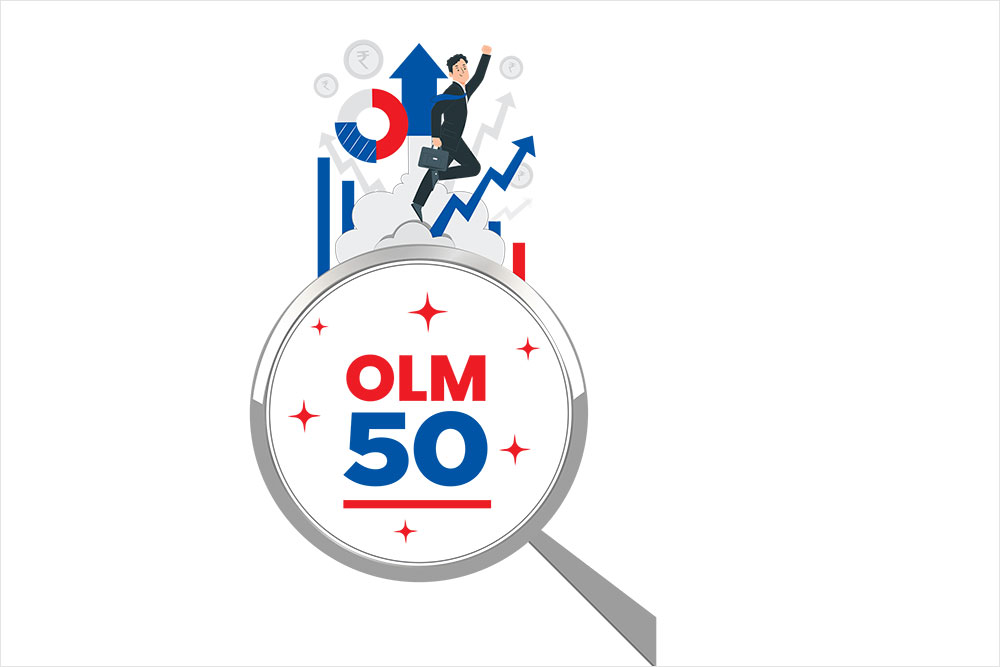The Indian equity market is in an upbeat mood, and almost all the funds in the OLM 50 list are among the top five funds in their respective categories in terms of performance. As experts suggest a portfolio review regularly, here’s our annual review of the OLM 50 list. This time we are replacing three funds in the OLM 50 list
The Indian equity market is in an upbeat mood, and almost all the funds in the equity category that are part of OLM 50, our basket of curated and handpicked funds, have made the most of it. Not just in equity, but even in the hybrid and debt categories, the majority of our schemes are among the top five schemes in terms of performance over the last year, in their respective categories.
Yet, it’s time for the annual review of the OLM 50 list. Experts recommend a portfolio review regularly; we have now made it an annual exercise instead of half-yearly to ensure we give our funds time to breathe across market cycles.
For two years, no mutual fund scheme in any category was dropped, but this time we are tinkering the OLM 50 list slightly, by dropping three schemes and replacing them with the ones in which we see more potential (see The New Entrants and The Dropouts).

How Did OLM 50 Fare?
In the equity category, the majority of OLM 50 funds managed to beat the category average. The outperformance was sharper in the small-cap category, while mid-cap funds underperformed. In the hybrid category, all schemes outperformed their benchmarks and the majority of them beat the category average.
Over the past one- and three-year periods, large-cap funds of OLM 50 returned 32.13 per cent and 19.38 per cent as against 31.94 per cent and 16.64 per cent by the Nifty 100 TRI index, respectively.
Among large-cap funds, ICICI Prudential Bluechip fund stole the show with 40.12 per cent returns over the last year, the highest recorded return from the OLM 50 basket. The fund has secured the second position in the entire large-cap universe over the three-year period. In the dynamic asset allocation category (balanced advantage fund), HDFC Balanced Advantage Fund topped the chart with the highest return in the last one year. Even in the debt category, two of our short-term bond funds, ICICI Prudential Short Term and HDFC Short Term, secured the top two positions.
We must admit that some of our funds lagged on performance. That’s because it is difficult for any fund manager to deliver the best returns every year; that’s typically because they may choose to hold certain stocks in the portfolio which may not be doing well in the current market rally, but have the potential to do well in the future.
For instance, Mirae Asset Large Cap has underperformed recently, but we believe that the fund is likely to do well in the future. This is because certain investments it has made in banking stocks have not yet materialised into gains. That’s why we have still kept it in OLM 50.
What Should You Do?
To start with, if your fund does not feature in the OLM 50 list, it does not necessarily mean you should exit it, and if you were invested in a fund that featured in OLM 50 earlier but is no longer there, it does not mean you need to replace it with another scheme from the list.
Our objective here is to suggest you a better alternative. Instead of pitching for funds that have done well in the short term, we have always believed in the importance of consistent long-term performance and the ability to sustain even in bad market conditions.
***
Methodology
The OLM 50 basket of 50 funds has been chosen after much care and deliberation. The cut-off date for our analysis was March 31, 2024, and we have considered categories defined by the capital markets regulator, the Securities and Exchange Board of India. We have only considered direct growth plans. Accord MF database was used for all the data and analysis.
Filters
We used two ?lters to reduce the number of funds. We have only taken schemes with assets under management (AUM) of at least 10 per cent of the respective category’s average corpus. If the category average AUM was `1,000 crore, we did not consider schemes with an AUM size of less than `100 crore in that category.
The other filter that we used is the number of years considered for the performance track record. We have only taken funds that have at least three years of track record.
Parameters
Equity Funds: Equity funds were evaluated on three key parameters: risk-adjusted returns, downside risk and the fund manager’s stock-picking acumen. We considered these parameters keeping in mind the retail investors’ risk-averseness and the fund manager’s ability to deliver returns.
We considered the fund managers’ track record. For this, we also evaluated other schemes under the fund manager to ensure consistency of performance and strategy. For those who started managing funds only in the last one year, we evaluated their past track record with other funds.
Debt Funds: We evaluated all debt funds on risk-adjusted returns and their credit quality (the score of investments in sovereign plus AAA/P1+ rating was evaluated and given due weightage) for three years. These ratings stand for relatively high safety and less risk.



